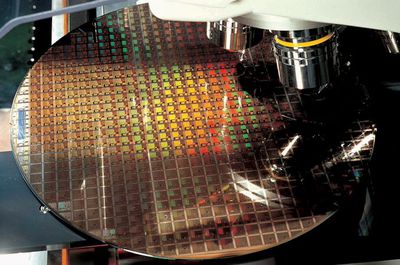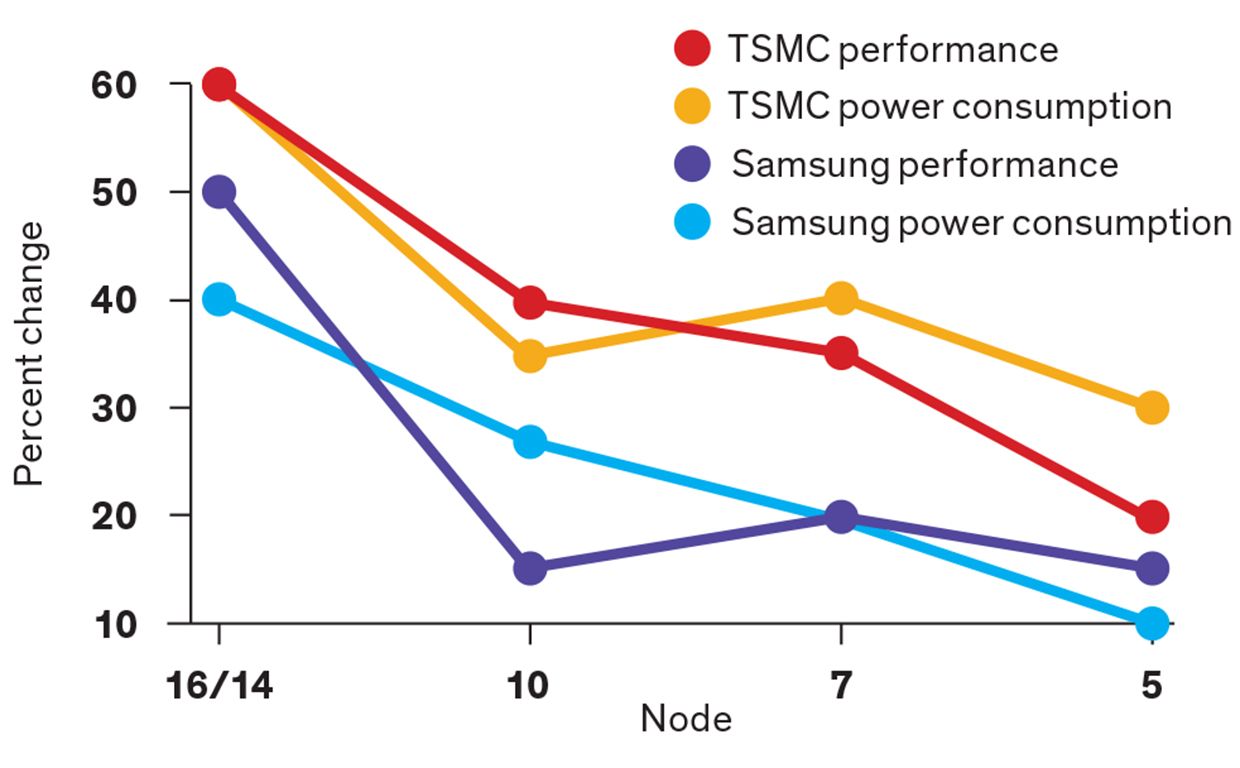TSMC Details Potential iPhone 12 A14 Performance and Upcoming 3nm Process
Apple chipmaker TSMC has set out the potential performance and power efficiency of the upcoming iPhone 12's A14 chip, according to a report by AnandTech.

The iPhone 12 is expected to contain an A14 chip, based on TSMC's smaller 5nm manufacturing process. The iPhone 11's A13 chip used a 7nm process by comparison.
Manufacturing chips using this smaller process offers a number of advantages, including a reduction in power consumption of up to 30 percent, and up to 15 percent increased performance. This indicates what kind of improvements may come to the A14 chip in the iPhone 12.
There is a tradeoff when selecting one or the other, but Apple tends to prioritize performance improvements over power consumption. When reducing the size of the manufacturing process for a new generation of chips, power consumption and performance improvements are slightly lower.
Last year, TSMC announced a $25 billion investment in the new 5nm node technology in a bid to remain the exclusive supplier of Apple's processors. TSMC has reportedly been in mass production of chips using the 5nm process for several months now, and the process is also expected to be used for Apple Silicon chips coming to the Mac before the end of this year.
In addition to the 5nm process for 2020, TSMC outlined its plans for a 3nm process coming in late 2022. This would likely be used for a potential A16 chip and other future Apple Silicon if the company follows previous years, but it is understandably difficult to speculate on Apple's manufacturing plans so far ahead. The 3nm process yields similar 30 percent and 15 percent power consumption and performance improvements over the 5nm process.
It is worth noting that regardless of the performance of TSMC's chips, Apple usually optimizes its software for further performance improvements. It is also possible that Apple could significantly prioritize power consumption over performance for improved battery life. These decisions belong to Apple regardless of TSMC's manufacturing process, making the exact behavior of the A14 chip somewhat uncertain until official announcement.
Popular Stories
Apple's next-generation iPhone 17 Pro and iPhone 17 Pro Max are just over two months away, and there are plenty of rumors about the devices.
Below, we recap key changes rumored for the iPhone 17 Pro models.
Latest Rumors
These rumors surfaced in June and July:Apple logo repositioned: Apple's logo may have a lower position on the back of the iPhone 17 Pro models, compared to previous...
Apple should unveil the iPhone 17 series in September, and there might be one bigger difference between the Pro and Pro Max models this year.
As always, the Pro Max model will be larger than the Pro model:iPhone 17 Pro: 6.3-inch display
iPhone 17 Pro Max: 6.9-inch displayGiven the Pro Max is physically larger than the Pro, it has more internal space, allowing for a larger battery and...
In 2020, Apple added a digital car key feature to its Wallet app, allowing users to lock, unlock, and start a compatible vehicle with an iPhone or Apple Watch. The feature is currently offered by select automakers, including Audi, BMW, Hyundai, Kia, Genesis, Mercedes-Benz, Volvo, and a handful of others, and it is set to expand further.
Apple has a web page with a list of vehicle models that ...
The calendar has turned to July, meaning that 2025 is now more than half over. And while the summer months are often quiet for Apple, the company still has more than a dozen products coming later this year, according to rumors.
Below, we have outlined at least 15 new Apple products that are expected to launch later this year, along with key rumored features for each.
iPhone 17 Series
iPho...
Apple is continuing to refine and update iOS 26, and beta three features smaller changes than we saw in beta 2, plus further tweaks to the Liquid Glass design. Apple is gearing up for the next phase of beta testing, and the company has promised that a public beta is set to come out in July.
Transparency
In some apps like Apple Music, Podcasts, and the App Store, Apple has toned down the...
New renders today provide the best look yet relocated Apple logo and redesigned MagSafe magnet array of the iPhone 17 Pro and iPhone 17 Pro Max.
Image via Majin Bu.
Several of the design changes coming to the iPhone 17 Pro model have been rumored for some time, such as the elongated camera bump that spans the full width of the device, with the LiDAR Scanner and flash moving to the right side.
...
Since the iPhone X in 2017, all of Apple's highest-end iPhone models have featured either stainless steel or titanium frames, but it has now been rumored that this design decision will be coming to an end with the iPhone 17 Pro models later this year.
In a post on Chinese social media platform Weibo today, the account Instant Digital said that the iPhone 17 Pro models will have an aluminum...
Amazon is soon to be back with its annual summertime Prime Day event, lasting for four days from July 8-11, the longest Prime Day yet. As it does every year, Prime Day offers shoppers a huge selection of deals across Amazon's storefront, and there are already many deals you can get on sale ahead of the event.
Note: MacRumors is an affiliate partner with Amazon. When you click a link and make a ...
Apple's position as the dominant force in the global true wireless stereo (TWS) earbud market is expected to continue through 2025, according to Counterpoint Research.
The forecast outlines a 3% year-over-year increase in global TWS unit shipments for 2025, signaling a transition from rapid growth to a more mature phase for the category. While Apple is set to remain the leading brand by...
![]()






















